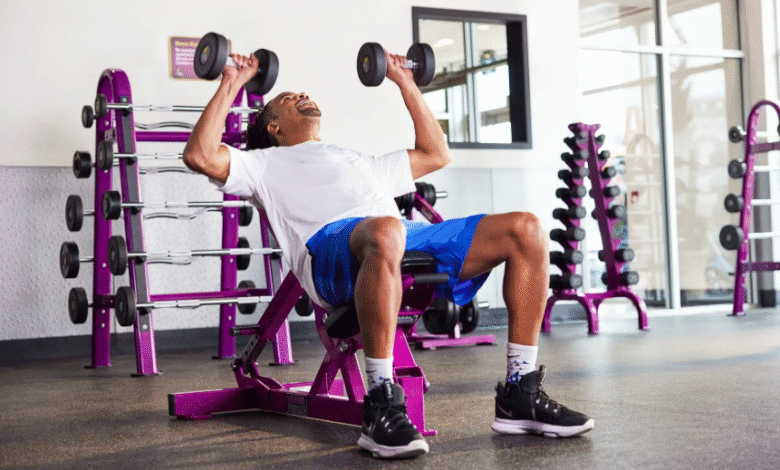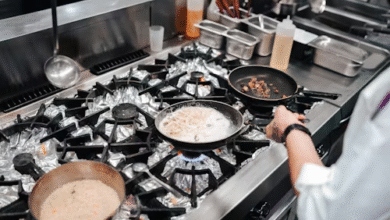Best Foundation for Busy Gyms

When building or renovating a fitness center, few elements are as essential—and as frequently underestimated—as the floor beneath your feet. The right commercial gym flooring does more than support heavy weights and absorb high-impact workouts; it enhances user safety, reduces noise, simplifies maintenance, and contributes to the gym’s overall aesthetic and brand identity.
Choosing the best flooring solution for a commercial facility requires careful planning. From material selection to thickness, layout, and long-term durability, gym flooring must meet the demands of hundreds, if not thousands, of daily users. This article explores the practical and performance benefits of commercial gym flooring, types available, selection factors, and tips for ongoing care.
Why Commercial Gym Flooring Is Critical
Every piece of gym equipment, every trainer, and every member relies on a durable, stable surface. Poor flooring not only increases the risk of injury but also damages machines and shortens the life of your investment.
Here’s why commercial gym flooring matters:
1. Impact Protection
Whether it’s dropped weights, high-intensity jumping, or repeated foot strikes, gym floors must handle constant impact. Proper flooring absorbs energy, protecting both users and subfloor structures.
2. Slip and Fall Prevention
Safety in the gym is non-negotiable. Commercial-grade flooring is textured or rubberized to provide strong grip, even when exposed to moisture or sweat.
3. Noise Reduction
Loud gyms create discomfort for users and staff. High-quality flooring dampens noise from machines, footsteps, and weight drops, creating a calmer environment.
4. Durability in High-Traffic Zones
Gyms endure thousands of footfalls daily. Flooring made for commercial use resists wear, indentation, and deformation over time.
5. Ease of Cleaning and Maintenance
Hygiene is a top concern in any shared space. Commercial flooring is often sealed or treated for easy cleaning, odor resistance, and antimicrobial protection.
See also: Discovering the Beauty of Jebel an Nabi Shu’ayb
Common Types of Commercial Gym Flooring
Modern gyms are no longer one-size-fits-all. From HIIT studios to yoga lounges and Olympic lifting platforms, each zone has unique flooring needs. Below are the most popular types of commercial gym flooring:
Rubber Rolls
Durable and seamless, rubber rolls provide solid, continuous coverage across large areas.
- Best for: Weight rooms, cardio zones, functional training areas
- Pros: Uniform surface, noise-absorbing, long-lasting
- Cons: Heavier installation process, requires professional cutting
Rubber Tiles
These interlocking tiles are easy to install and replace. They’re modular, making them ideal for small or oddly shaped rooms.
- Best for: Home gyms, PT studios, strength zones
- Pros: DIY-friendly, customizable layouts
- Cons: Visible seams may collect dirt if not sealed properly
Vinyl Sports Flooring
Vinyl offers a smooth, durable surface that mimics wood or other finishes while delivering better moisture resistance.
- Best for: Group classes, dance fitness, multipurpose rooms
- Pros: Aesthetic flexibility, easy to clean
- Cons: Less cushioning than rubber
Foam Tiles or Mats
Foam provides a softer surface, ideal for bodyweight workouts and low-impact zones.
- Best for: Yoga studios, stretching zones, rehab areas
- Pros: Lightweight, comfortable, easy to move
- Cons: Less durable under heavy weights or high-traffic use
Artificial Turf with Rubber Underlay
Synthetic turf is popular in CrossFit and functional fitness spaces for sled pushes and agility drills.
- Best for: Functional training lanes, bootcamps
- Pros: High-performance, slip-resistant, eye-catching
- Cons: Expensive and harder to clean
Flooring by Zone: A Strategic Approach
An efficient gym layout includes different activity areas, each with flooring tailored to its function:
| Area | Recommended Flooring Type |
|---|---|
| Weightlifting Zone | ¾ inch rubber rolls or tiles |
| Cardio Equipment Space | ⅜ inch rubber or vinyl flooring |
| Functional Training | Rubber or turf over rubber base |
| Stretching/Yoga Area | Foam or soft rubber mats |
| Reception & Entry | Branded vinyl or textured rubber |
| Locker Room | Waterproof vinyl or anti-slip rubber |
Selecting zone-specific flooring not only enhances performance but also gives the gym a polished, professional feel.
Factors to Consider When Choosing Commercial Gym Flooring
Making the right flooring decision involves evaluating multiple factors:
1. Thickness
Thicker flooring offers better impact absorption and durability. Use:
- ¼ inch (6mm) for stretching, yoga, and light activity
- ⅜ inch (9mm) for general use and cardio zones
- ½ to ¾ inch for weightlifting and Olympic lifts
2. Load-Bearing Strength
Heavy machines and racks require high-density rubber flooring to prevent indentation.
3. Installation Method
Tiles are easier to install and replace, while rolls and turf often require adhesives or professional help.
4. Budget
Costs vary based on thickness, material, and area. Rubber is a worthwhile investment for durability, but vinyl and foam options can reduce costs in non-impact areas.
5. Aesthetic Appeal
From plain black to color-flecked designs and even logos embedded in the flooring, the appearance of your gym can set it apart and reinforce your brand.
6. Maintenance Needs
Some surfaces need more care than others. Choose low-maintenance materials in high-use areas to reduce downtime and cleaning effort.
Installation Tips
Proper installation ensures that your commercial gym flooring performs safely and lasts longer:
- Clean and level the subfloor before laying mats or rolls
- Use adhesives or double-sided tape to prevent movement, especially under machines
- Allow rubber rolls to relax for 24 hours before cutting
- Add transition strips or beveled edges to avoid trip hazards between flooring zones
For large areas or premium floors like turf or vinyl, hiring a professional installer can save time and ensure a seamless finish.
Maintenance and Longevity
To get the most out of your investment, maintain a simple cleaning schedule:
- Daily: Sweep or vacuum to remove debris
- Weekly: Mop with pH-neutral cleaners
- Monthly: Inspect edges, seams, and wear areas
- Immediately: Wipe up spills to prevent bacteria growth
Commercial gym flooring can last 10–15 years or more with proper care, reducing long-term costs and avoiding early replacement.
Sustainability and Eco-Friendly Options
Eco-conscious gym owners can opt for recycled rubber flooring, made primarily from used tires. These solutions are budget-friendly, environmentally sustainable, and meet high-performance standards. Look for certifications such as GREENGUARD or FloorScore to ensure indoor air quality is not compromised.
Final Thoughts
The flooring beneath a gym’s machines, weights, and members does more than just hold everything up—it supports safety, function, and the user experience. Investing in the right commercial gym flooring ensures long-term durability, easy maintenance, and a professional appearance that reflects your brand’s quality.
Whether you’re launching a new facility or upgrading an older space, the flooring you choose sets the stage for every workout that follows. It’s not just a surface—it’s a foundation for fitness success.




